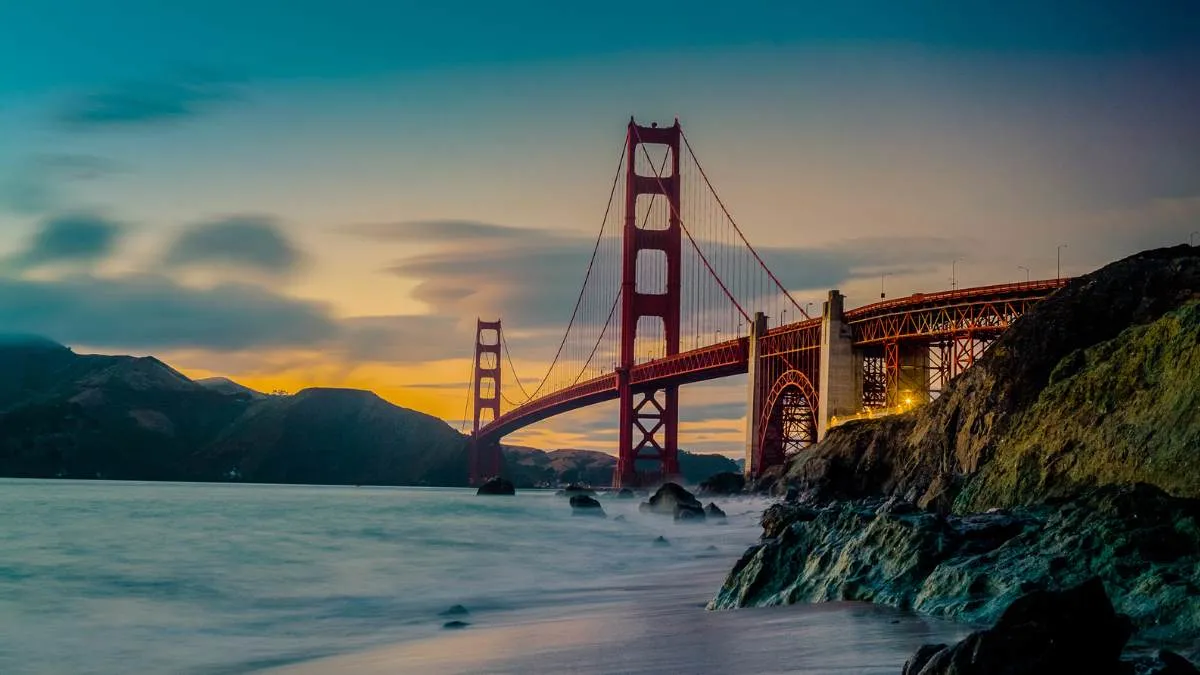California, located on the West Coast of the United States, is a truly remarkable and influential state. It stands out for its immense size, incredibly varied landscapes from sunny beaches and towering mountains to vast deserts and fertile farmlands, and its powerful impact on both American and global culture, economy, and innovation. This dynamic state is home to Hollywood, the heart of the entertainment industry, and Silicon Valley, a global hub for technology. Its rich history includes Native American cultures, Spanish missions, Mexican rule, and the transformative Gold Rush. California continues to be a magnet for diverse populations, trends, and industries, shaping much of modern life.
Check Out: Which is the Richest University in the USA?
History of California
The history of California is incredibly rich and goes back thousands of years, covering various periods:
Original American Period
For a very long time, thousands of years before Europeans arrived, California was home to many different original American tribes. Each tribe had its own unique culture, languages, and ways of life, which were rich in diverse scenarios.
European Investigation and Spanish Rules (1542–1821)
The Spanish explorers first landed in California in the 16th century, beginning with figures such as Juan Rodríguez Cabrillo. Spain officially began settling "Alta California" in 1769. He built a series of 21 missions along the coast with military forts (Presidios) and small towns (pueblos). The purpose of these missions was to convert the original Americans into Christianity and expand Spanish control.
Mexican Period (1821-1848)
After Mexico won its independence from Spain in 1821, California became a Mexican province. During this time, large cattle ranches, called "ranchos," became very important. American settlers also started moving into the area, setting the stage for future changes.
US Acquisition and State (1846-present)
Mexican-American War: California was given to the United States in 1848 after the Mexican-American War ended.
Gold Rush (1848–1855): In a huge twist in 1848, there was a search for gold in the Sutter Mill. This closed the famous gold crowd, causing a huge wave of people around the world. This rapidly populated boom quickly took its next big step.
State Road (September 9, 1850): California quickly became the 31st state to join the United States on September 9, 1850, due to rapid growth from the gold rush. It was admitted as a "free state", which was a great thing in the leading tension for the Civil War.
Since the formation of a state, California has been a center for new ideas, diverse cultures, and major trends, which have given a lot of shape to modern American life.
Key Details about California
Nickname: Often called "The Golden State", a sign of the history of its gold rush and the linen climate.
Population: It is the most populous state with around 40 million inhabitants in the US.
Region: After Alaska and Texas, California, U.S. The land is the third-largest state by land area.
Capital City: The state capital is Sacramento.
Largest City: Los Angeles is the largest city in California and the second most populous city in America
Geography: This incredible region claims diverse landscapes, including the Long Pacific Coastline, the Towering Mountain Range (Sierra Nevada with Mount Whitney, embodied U.S.
Major industries: California is a huge economy; if it were a country, it would have been one of the largest in the world. Major industries include:
Technology: Focused in Silicon Valley, home of global tech veterans.
Entertainment: Hollywood is the world's film and television hub.
Agriculture: A national leader in the production of fruits, vegetables, nuts, and dairy products.
Tourism: Millions of people travel to their national parks, beaches, and vibrant cities.
International Trade: Its major ports are important for global supply chains.
Diversity: California is known for its incredible cultural and ethnic diversity, with a rich mixture of communities from around the world.
Natural Danger: The state suffers from earthquakes due to its location on the San Andreas Fault.
Must Read
Eiffel Tower: Check Who Made it, Interesting Facts and More
